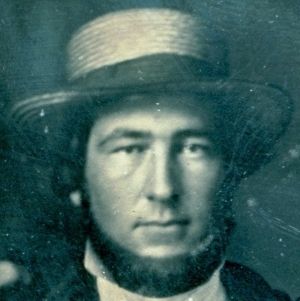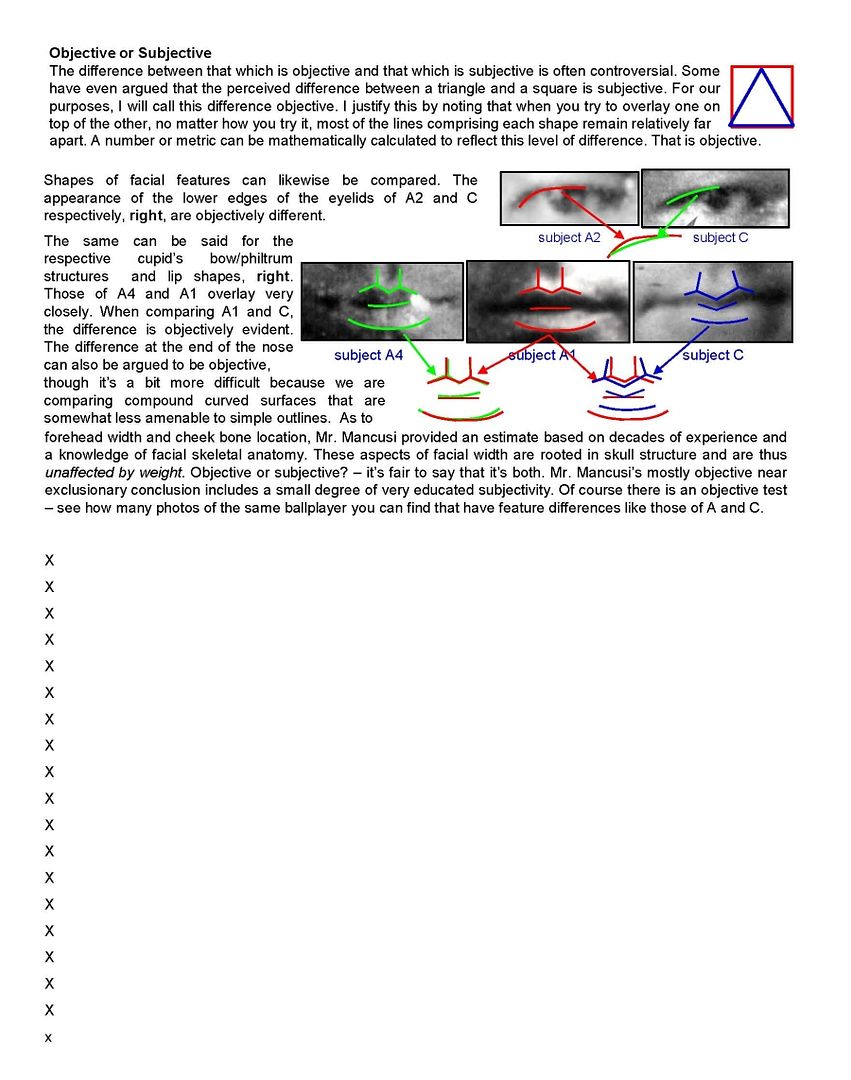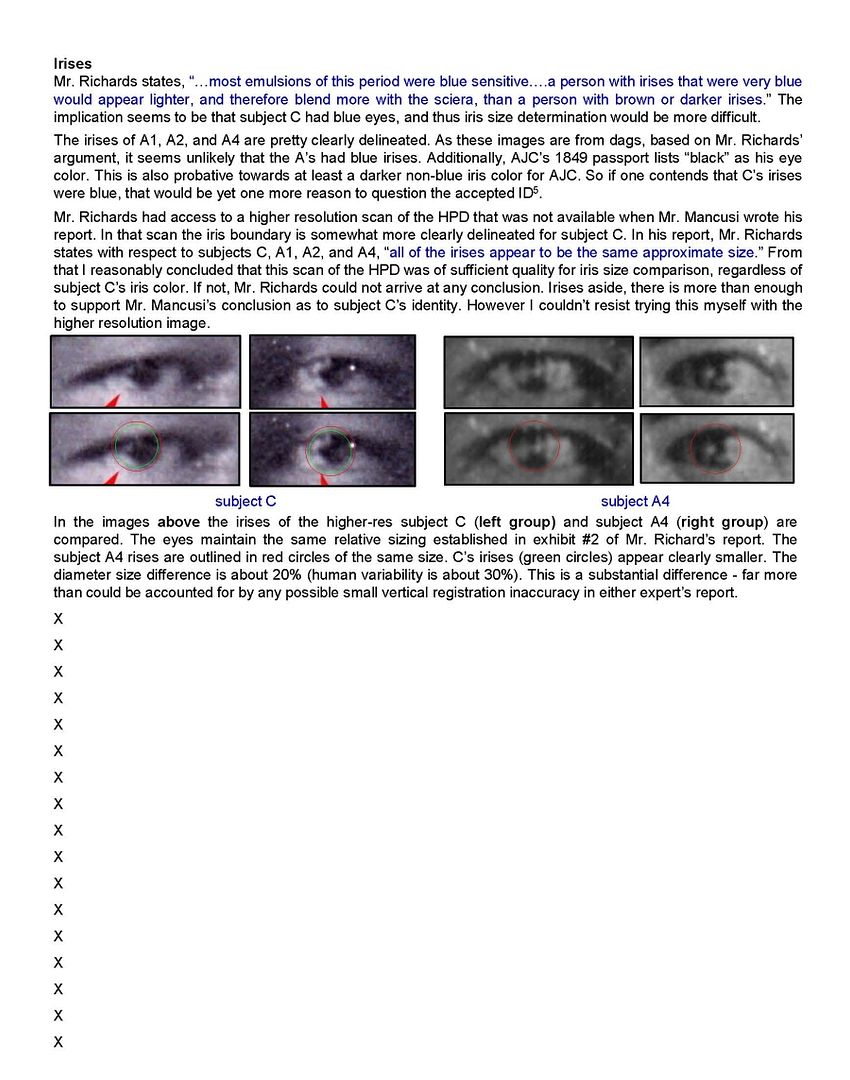|
|
|
|
#1
|
||||
|
||||
|
>>The issue here is not competency to compare faces. The issue is knowing what differences are real or illusionary, caused by photographic illusion or studio touch up…I believe I have the right to point out that Mr. Mancusi is an artist, not a photography expert. …..Mr. Mancusi is being asked to opine on a matter that requires expertise from another field. Since you mention attorneys, that would be akin to a tax attorney being asked to opine on a matter of matrimonial law…
You are saying that Mr. Mancusi is not qualified to compare faces in photographs and has no understanding of the effects of lighting and retouching, as if one would think that was not a significant part of his job as the NYPD’s senior forensic artist for 24 years. That is of course completely ludicrous. From p. 28: Mr. Mancusi’s background includes decades of facial comparison experience, including frequently comparing faces in photos of varying quality, lighting, angle and facial expression as well as evaluating facial changes over varying periods of time. Forensic artists who have been formally educated in the rendering of human faces have particular expertise as to how lighting, look angle, and expression affect the appearance of facial features. He is fully qualified to opine on the likelihood of these two faces belonging to the same person.:   Last edited by bmarlowe1; 10-16-2011 at 08:52 PM. Reason: changed image source to phtobucket |
|
#2
|
||||
|
||||
|
>>As to methodology, Mr. Mancusi's belief that individual comparison of each of the A Subjects to Subject C is not necessary, that one can apply the Subject C to Subject A4 comparison conclusion to a Subject C to Subject A1, A2 or A3 comparison, is simply incorrect.
No that is not correct and you have said nothing to support that other than to repeat it. My response is on p. 28: Mr. Richards states, “each ‘known’ image should be independently compared with the questioned image.” He asserts that it is necessary to not only compare A4 directly to C, but to also individually compare A1, A2, and A3 to C. But he does not state what difference he thinks that would make - what features of A1, A2 or A3 would compare more favorably to C? All the A's have virtually the same forehead width, so it suffices to then compare only one of them directly to C. The same can be said for the particular characteristics of the eyelid, lips/philtrum, and nose. When you want to measure something, you don't have to go to the National Bureau of Standards to get "the" ruler. Any ruler from Walgreens will do just fine. That's because we know that the Walgreens ruler is sufficiently close to the NBS ruler to do the job. >>As to negativity, the only one taking what I believe are uncalled for shots at competency is you against me, and you know quite well the comments I'm talking about. So, you can question Mr. Mancusi's competency to compare faces in photos, and I can't question your competency to make that judgment? And, you can vigorously claim for years that H and G are Curry and Adams, I can’t question your competency? That’s uncalled for? You certainly challenged my competency in your response in the newsletter supplement. Give me a break. >>I cooperated fully knowing that your intended objective is to have the HOF change the Cartwright bronze. That is simply another mischaracterization of a private communication. Last edited by bmarlowe1; 10-16-2011 at 03:41 PM. |
|
#3
|
|||
|
|||
|
Quote:
And, of most concern, his report shows no recognition that the conclusions one draws when comparing Subject C to Subject A4 are not necessarily the same as the conclusions one can draw when individually comparing Subject C to Subjects A1, A2, A3 or A4 regardless whether one concludes that Subjects A1, A2, A3 and A4 are the same individual. This last point is crucial and warrants further explanation. When a person poses, no two poses are precisely the same, especially if they are taken in different photo shoots. A person may tilt his head one way one time, another way the other time. He may be in a better mood and therefore exhibit a different smile. The studio lighting could be different. He could have suffered a disfiguring injury. The reasons are endless. If there are no exclusionary differences between the comparison subjects, the conclusion that the subjects likely are different individuals then becomes a subjective determination that relies crucially on how ones brain interprets the comparison of the two subject images. So, say, if I was to regard it as a close call between concluding that the subjects possibly could be the same individual versus concluding they likely are not, there could easily be enough differences in the subjects appearance in another pose to cause my brain to perceive the second comparison just differently enough that I will arrive at the other conclusion. This is accepted doctrine in photo ID, as Mr. Richards states, and is consistent with simple common sense. There are no shortcut methods to doing photo ID. If Mr. Mancusi desires to opine whether Subject C is the same person as Subjects A1, A2 and A3, he must undertake separate comparisons with those other subjects. He failed to do so and therefore his conclusion that Subject C is unlikely to be one of the other A subjects is necessarily suspect due to having been derived through improper analysis. This response pertains to the "art" component inherent in photographic facial ID. |
|
#4
|
|||
|
|||
|
Quote:
|
|
#5
|
||||
|
||||
|
Quote:
On p. 29 I said: As to lighting and head angle, again there is no explanation given as to of how this would cause the observed feature differences. It is as if the differing light sources or small differences in head angle exhibited in these photos would magically change the apparent shape of numerous key features in a way we could not understand. However, the differences seen here cannot just be dismissed as illusions. If that contention is true, we should easily be able to find such multiple feature differences among clear photos of the same player from the many thousands of available early ballplayer images. I contend that such a find would be at least extremely rare. Please tell us how the dag process or hand tinting can, for example, change the shape of the lower edge of the upper lid in these two clearly open eyes from subjects C and A. This feature is apparent in all the subject A images.   Last edited by bmarlowe1; 11-26-2011 at 04:46 PM. Reason: photobucket problem corrected |
|
#6
|
||||
|
||||
|
First, Jimmy made a great point before which has not been addressed. What are the markings on the dag? If we can date it we may be able to say for certain whether it could be Cartwright. If it dates from post 1849 then it can't be Cartwright as that is when he left for the Gold Rush and ended up in Hawaii. If dating is not possible, or it dates from before Cartwright's departure, then it's back to facial recognition.
Last edited by oldjudge; 10-16-2011 at 04:53 PM. |
|
#7
|
|||
|
|||
|
Quote:
Assuming one accepts that the dag comfortably dates to the period that Cartwright was in NYC, may I add that besides being back to facial analysis we are also back to provenance analysis. Last edited by benjulmag; 10-16-2011 at 05:12 PM. |
|
#8
|
||||
|
||||
|
>>If there are no exclusionary differences between the comparison subjects, the conclusion that the subjects likely are different individuals then becomes a subjective determination
No it is not so simple.  Last edited by bmarlowe1; 10-16-2011 at 05:03 PM. |
|
#9
|
|||
|
|||
|
I agree it's not so simple. If these differences exist in all photo shoots, are not affected by the passage of time and are objective, then they would be exclusionary. Yet your own expert does not characterize them as such. So perhaps their presence is a function of the time difference between comparison images and particularities of pose.
|
|
#10
|
|||
|
|||
|
Quote:
Second, what blows my mind about this is that you raise a point in your response yet prohibit me from seeking a response from Mr. Richards. Wasn't it the case that the publication of the newsletter supplement was delayed for a few days while you and I went back and forth on whether my reference to lens focal length was generated by the knowledge I obtained from being a college physics major who studied optics, as opposed to being obtained from Jerry Richards? (Let me guess-reference to another private communication). Only when I satisfied you that I did not obtain it from Jerry Richards did you consent to have it published. You can't behind the scenes put conditions on what a person may do/say and then criticize him for adhering to your conditions. Third, as a partial answer to your question, iris size. Mr. Mancusi felt he saw a very significant discrepancy, which I believe influenced him greatly in his conclusion. Yet in the end that discrepancy turned out not to exist. (And please don't mention the 20% difference you still see. May I respectfully suggest you educate yourself on margin of error analysis associated with daguerreotype emulsion type.) |
|
#11
|
||||
|
||||
|
>> Second, what blows my mind about this is that you raise a point in your response yet prohibit me from seeking a response from Mr. Richards. Wasn't it the case that the publication of the newsletter supplement was delayed for a few days while you and I went back and forth on whether my reference to lens focal length was generated by the knowledge I obtained from being a college physics major who studied optics, as opposed to being obtained from Jerry Richards?
Your are free to inform us as to how focal length affects what we see in this case. The agreement as I understood it was my expert – your expert – my response – your response. I felt it was fair to see your expert's opinion before I made my final response. >> Please don't mention the 20% difference you still see. May I respectfully suggest you educate yourself on margin of error analysis associated with daguerreotype emulsion type. Yes – please explain exactly how your “margin of error” number is derived. >>Mr. Mancusi felt he saw a very significant discrepancy, which I believe influenced him greatly in his conclusion. Yet in the end that discrepancy turned out not to exist. It does exist. I'm sure you will tell us without explanation that this is but another illusion. Note that C and A4 are both from dags.  Last edited by bmarlowe1; 10-16-2011 at 05:48 PM. |
|
#12
|
||||
|
||||
|
>>I agree it's not so simple. If these differences exist in all photo shoots, are not affected by the passage of time and are objective, then they would be exclusionary. Yet your own expert does not characterize them as such. So perhaps their presence is a function of the time difference between comparison images and particularities of pose.
You have made the same point several times and my answer is the same. If what you say is true, then one should be able to go though dags of famous people or photos of 19thC ball players and relatively easily find multiple feature differences between faces of the same person such as those exhibited in the C vs. A comparison. I maintain that such examples would be at least extremely difficult to find. In any case - you don't have to do it today, I am patient. I'm even willing to help you. I can certainly supply the faces. Last edited by bmarlowe1; 10-16-2011 at 05:51 PM. |
|
#13
|
|||
|
|||
|
Quote:
Last edited by benjulmag; 10-16-2011 at 06:10 PM. |
|
#14
|
|||
|
|||
|
Quote:
Second, from Mr. Richards' report. Measuring the iris with any degree of accuracy can be problematic. As to why he says that, I would respectfully ask you to educate yourself on margin of error analysis associated with daguerreotype emulsion type. In the alternative, just as you were kind enough to put me in touch with Mr. Mancusi, if you desire, I will ask Jerry to discuss it directly with you. |
|
#15
|
||||
|
||||
|
Agreed. i would be happy to talk to him.
|
 |
|
|
 Similar Threads
Similar Threads
|
||||
| Thread | Thread Starter | Forum | Replies | Last Post |
| 1928 Fro Joy Babe Ruth - Authentic? | Clutch-Hitter | Net54baseball Vintage (WWII & Older) Baseball Cards & New Member Introductions | 27 | 07-05-2011 11:30 PM |
| - SOLD - Alexander Cartwright Letter | aaroncc | Baseball Memorabilia B/S/T | 2 | 04-27-2010 08:41 AM |
| FS: 1923 V100 Willard Chocolate Grover Cleveland Alexander PSA 3 (mk) but clean | packs | 1920 to 1949 Baseball cards- B/S/T | 0 | 04-04-2010 01:31 AM |
| PRICE REDUCED - 1944-45 Albertype HOF Postcard - Alexander Cartwright (SGC 80) | bcbgcbrcb | 1920 to 1949 Baseball cards- B/S/T | 2 | 10-07-2009 09:59 AM |
| Cartwright Documents: Signature Question | Archive | Net54baseball Sports (Primarily) Vintage Memorabilia Forum incl. Game Used | 2 | 11-14-2008 01:08 PM |